Fujifilm has announced the slimmed-down GFX100S medium-format and X-E4 APS-C mirrorless cameras.
Fujifilm GFX100S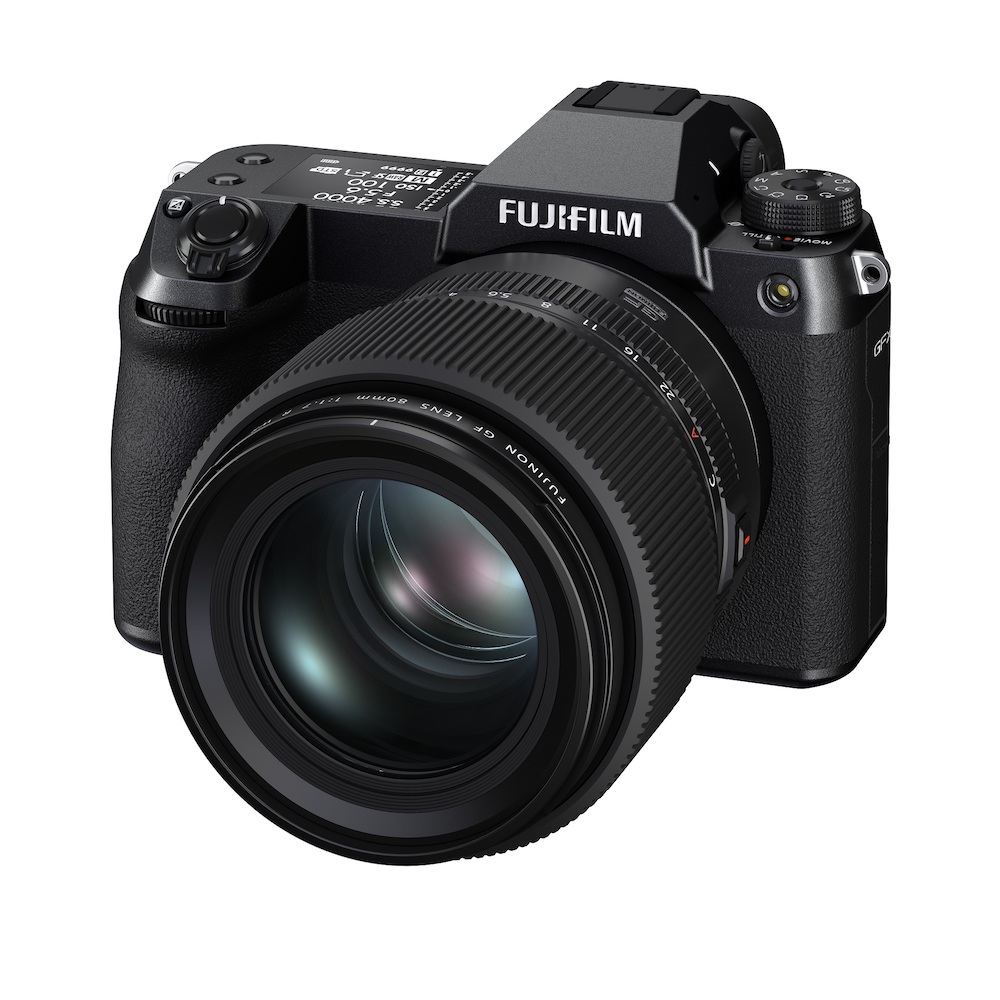
Fujifilm’s first GFX50 medium format camera revolutionised the sensor format as it brought lightness and portability to what was traditionally considered to be heavy and very costly professional digital cameras, and with the much-anticipated GFX100S, the Japanese camera maker has finally introduced a sub-1kg variant of its stellar GFX100 102MP large format camera.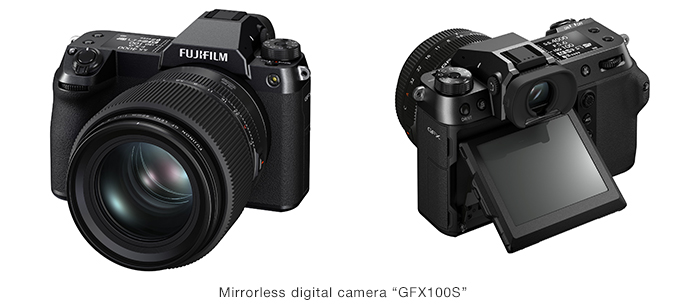
The Fujifilm GFX100S features a redesigned body that is 30% smaller in volume than its predecessor, and the new camera weighs in at 900g, which is 500g lighter than the GFX100, and just 160g heavier than a comparative full-frame mirrorless camera.
Alongside the redesign, Fujifilm have added a number of upgrades to the new camera, including a newly developed In-Body Image Stabilization mechanism to support hand-held photography. The new five-axis IBIS has up to 6.0-stops, and uses a high-performance gyro sensor and acceleration sensor as well as an updated algorithm for detecting vibrations for better image stabilization than the GFX100. 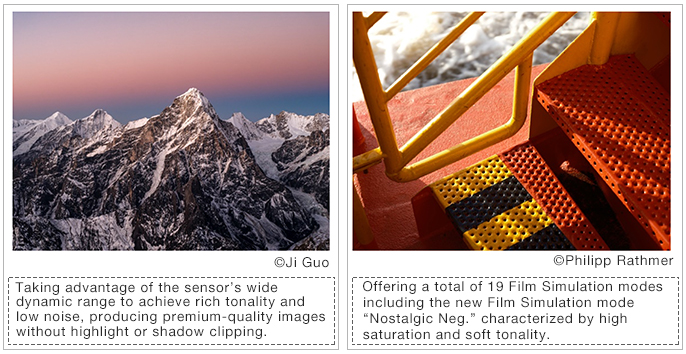
While the GFX100S utilises the same 102MP large format sensor and X-Processor 4 image engine as the GFX100, a new firmware enables a faster, more intelligent AutoFocus (AF) system with 3.76 million phase detection pixels across the surface of the image sensor (approx. 100% coverage), with AF speeds as fast as 0.18 seconds. The algorithm for movement prediction and face/eye detection has been updated to track a moving subject and people within the frame accurately by up to 50%, ensuring to capture decisive photo moments.
The camera attains focus smoothly even in near-darkness conditions down to -5.5EV, such as in a dark room or at night outdoors illuminated only with starlight, providing users with accurate AF in low light.
The GFX100S can capture smooth 4K@30P video, recording 4K@30P 4:2:0 10-bit video onto an SD card inserted, and supporting the output of 4K@30P 4:2:2 10-bit video via the HDMI port for greater color sampling. In the DCI format (17:9 aspect ratio), commonly used by digital cinema cameras, the camera records video with a sensor area measuring about 49.5mm diagonally. The size, bigger than that of large sensors increasingly adopted by high-end cinema cameras, results in outstanding high ISO performance, shallow depth-of-field capability and wide tonal reproducibility. This makes it easier than ever before to produce premium-quality video footage with more detailed textures and three-dimensional definitions while even capturing the atmosphere of the scene.
The GFX100S supports the highly efficient H.264 and H.265/HEVC compression codecs as well as the “F-Log” mode that reproduces rich tonality and the “Hybrid Log Gamma (HLG)” for recording high dynamic range (HDR) footage with ease. The bit rate can be set up to 400Mbps to produce video as intended.
When used with the “NINJA V” by ATOMOS, the GFX100S can record video in the Apple ProRes RAW format. The RAW data, free of any in-camera processing, allows users to apply exposure adjustments and color grading with flexibility for fully-fledged video production.
The Fujifilm GFX100S will be available from February 2021 for US$5,999, body only, and was launched alongside a new GF80mm F1.7 R WR prime lens created to deliver creamy and rich bokehs for portraits. The GF80mm F1.7 R WR will also be available in February 2021 for US$2,299.
Fujifilm X-E4
With the X-E4, Fujifilm has utilised a minimalist monobloc rangefinder design with reduced bumps and protrusions to make the camera easily pocketable to fulfill its purpose as a street shooter, and with a new XF27mm F2.8 R WR lens attached the XE-4 weighs in at 448g, which makes it the lightest model in the current fourth-generation X series.
While the XE-4 lacks the In-Body Image Stabilisation of X-T series, the X-E4 does pack significant photographic capabilities thanks to the inclusion of a back-illuminated 26.1MP X-Trans CMOS 4 sensor and X-Processor 4, which enables this compact shooter to attain fast AF focus at 0.02 seconds, and use Fujifilm’s novel 18 Film Simulation modes for both photography and videography, while its 180-degree rotatable LCD monitor enables snaps from odd angles.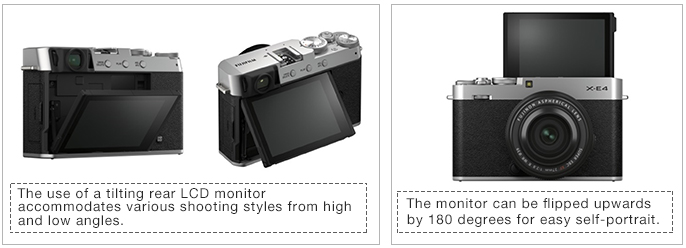
The X-E4 is capable of capturing 4K video from the amount of data equivalent to 6K to ensure high-resolution footage with low noise, and can record 4K@30P video at 8-bit 4:2:0 onto an SD card inserted in the camera, and outputting 4K@30P video at 10-bit 4:2:2, containing greater color information, via HDMI port. The camera is also capable of high-speed Full-HD recording at 240fps, producing up to 10x slow-motion footage of a split-second motion of a fast-moving subject.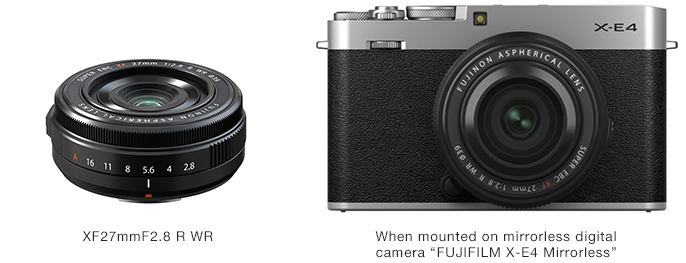
The Fujifilm X-E4 is available with optional accessories, including a genuine leather bottom case, a metal hand-grip and a top-mounted thumb rest. The X-E4 will be available from early March at a cost of around US$850, body only. A kit with th new weather-resistant 27mm F2.8 R WR lens will be available for around US$1050, while the 27mm F2.8 R WR alone will cost US$399.








